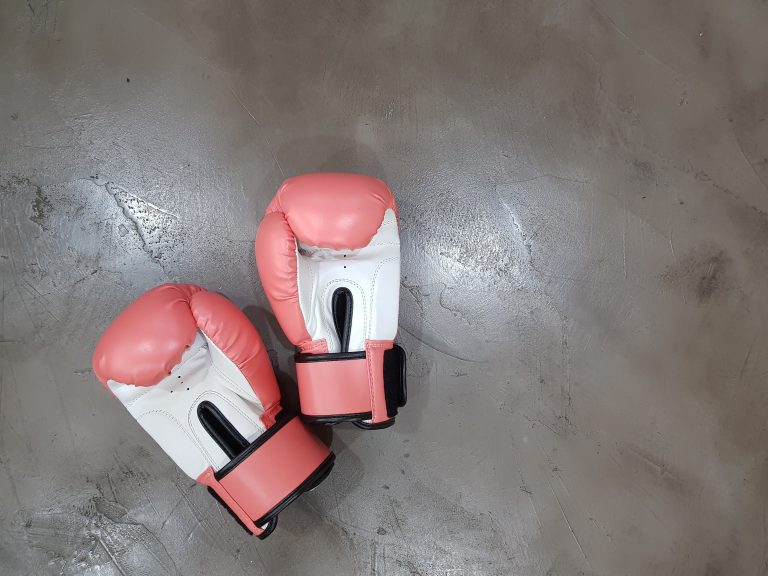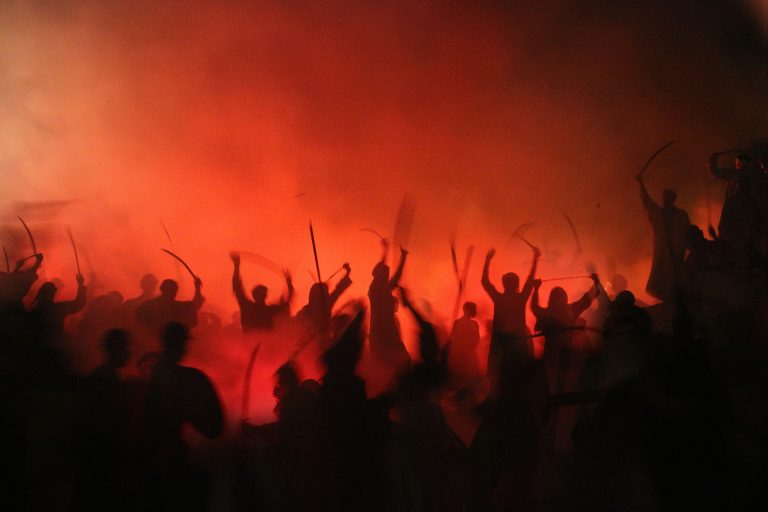How Many Different Color Belts Are There In Karate?
Karate is a Japanese martial art that has been popularized throughout the world, and one of the unique features of karate is its ranking system, which utilizes different colored belts to distinguish between different levels of expertise. Many people who practice karate are curious about how the belt system works and how many different color belts there are in karate.
In this article, we’ll explore the belt system in karate, from the various ranks and the requirements for achieving them, to the different colors of belts and the meaning behind them.
The Belt System in Karate
The belt system in karate is designed to denote a student’s level of skill and proficiency. The system follows a specific order of colored belts, increasing in difficulty as the student progresses through the ranks.
In general, there are ten ranks in karate, which are typically divided into two categories: kyu ranks for beginners and dan ranks for advanced students. The word „kyu“ means „class“ or „level,“ and the word „dan“ means „degree“ or „rank.“
The Kyu Ranks
The kyu ranks in karate are the lower levels, and there are typically nine of them. These are often referred to by color, with the colors usually starting with white and getting progressively darker as the student advances.
The first kyu rank is usually a white belt. Once a student demonstrates proficiency in the basic moves, stances, and katas (sequences of movements), they may move on to the second kyu, which may be represented by a yellow belt or a yellow stripe on their white belt. The third kyu might be designated by a green belt or green stripe, while the fourth kyu may be represented by a blue belt or blue stripe. The fifth kyu is usually represented by a purple belt, while the sixth kyu is often represented by a purple and white belt.
As a student advances in their kyu ranks, they will be expected to display greater proficiency and understanding of the art of karate. The seventh kyu may be represented by a brown belt or brown stripe, while the eighth kyu is often represented by a brown and white belt. Finally, the ninth kyu may be designated by a red belt or a red and white belt.
The Dan Ranks
Once a student reaches the top kyu rank, which is usually the first brown belt, they may begin working towards the coveted black belt, which is the first of the dan ranks.
There are usually ten dan ranks in karate, each represented by a new degree of the black belt. The first dan, or Shodan, is usually considered a beginner black belt. From there, students can progress to Nidan (second dan), Sandan (third dan), and so on.
The Different Colors of Belts in Karate
There is a lot of symbolism behind the different colors of belts in karate. Generally, the lighter colors represent the earlier stages of karate training, while the darker colors represent the more advanced ones.
White belts are typically reserved for beginners who are just starting their journey in karate. Yellow belts and yellow stripes on white belts usually denote a student who has gained some basic knowledge of karate, while green belts generally indicate that a student has advanced beyond the basics and has demonstrated a solid grasp of the fundamentals.
Blue belts are often seen as an intermediate stage, indicating that a student has moved on from the basics and is starting to develop their own style and technique. Purple belts generally indicate that a student is moving towards the advanced stages of karate, while brown belts indicate a high level of proficiency and competence.
Red belts are seen as a pre-cursor to the highest rank, the black belt. The red and white belt, which is the highest kyu rank in many karate systems, signifies that the wearer is ready to begin training for the coveted black belt.
The black belt is the highest and most prestigious rank in karate. It is usually seen as a symbol of mastery, and individuals who hold this rank are expected to know and understand all aspects of karate.
How Many Different Color Belts Are There in Karate?
An Overview on the Number of Different Color Belts in Karate
Karate is one of the most popular martial arts disciplines worldwide. Its origin is traced back to the 13th century Japan. The art in martial arts is achievable through the rigorous and progressive training. Karate is no exception as it involves several levels of proficiency that can be attributed to the color of belts used in the sport. The number of belts can vary depending on the style and association. However, traditionally, there are six kyu ranks, or junior levels, with six corresponding belt colors, with black belts are generally considered senior levels or dan ranks.
In the following paragraphs, we will present some of the most frequently asked questions about the number of different color belts in karate, along with accurate information and evidence from credible sources.
What are the Six Belts in Karate?
Karate has six belt colors for kyu ranks. They are usually, but not always, presented in the following order in a karateka’s training progression:
1. White Belt
2. Yellow Belt
3. Orange Belt
4. Green Belt
5. Blue Belt
6. Brown Belt
The advancement from kyu rank to the next is usually determined through the acquisition and proficiency of a specific set of techniques in kata, kumite, and kihon within the style and association, along with other aspects, such as attitude and discipline.
What is the Highest Rank in Karate?
The highest rank or level of expertise in karate is that of a black belt or dan rank. However, like the junior levels, there are several degrees of black belts, represented by different colors, with beginner or 1st-degree being the most common and prestigious.
How Long Does it Take to Get a Black Belt in Karate?
The amount of time it takes to get a black belt in karate is different based on various factors such as age, physical ability, dedication, the difficulty of the style, and the specific association. In general, it can take an individual between three to five years to acquire a first-degree black belt, while it may take up to ten years or more to reach the more advanced levels.
Can You Skip Ranks in Karate?
It is rare, but possible, for an individual to skip a rank in karate, depending on the association and sensei (instructor). Skipping ranks usually happens when someone makes exceptional progress, shows remarkable proficiency, or undergoes an intensive training program. However, it is more common for an individual to repeat a rank or face a more rigorous test before progressing to the next level.
Why Do Karate Belts Have Different Colors?
Karate belts have different colors to distinguish junior levels or ranks and to signify the level of proficiency or mastery of techniques in kata, kumite, and kihon for each level. Also, the different color belts can motivate and encourage students by providing a tangible goal to achieve in their training.
How Many Different Color Belts Are There in Karate: A Comprehensive Guide
If you are wondering how many different color belts are there in karate, you have come to the right place. The martial art of karate has a ranking system that is signified by the different color belts. These belts not only indicate your level of proficiency in the art but also act as milestones in your journey towards mastery.
In this guide, we will take you through the different color belts in karate, their significance, and the requirements for attaining each belt.
White Belt
The journey of every karateka begins with the white belt, which symbolizes purity and innocence. As a white belt, you are a newbie to the art and have not yet mastered any karate techniques.
The requirements for attaining a white belt vary by dojo or karate school but are generally straightforward. You need to demonstrate basic techniques, such as stances, punches, and kicks, and show that you understand the basic etiquette and philosophy of karate.
Yellow Belt
After attaining the white belt, the next level is the yellow belt, which signifies the first step towards proficiency. A yellow belt indicates that you understand the fundamental karate techniques and can use them effectively.
To earn a yellow belt, you need to demonstrate your command of the basic techniques, show improved stances and movements, and perform a kata (a series of choreographed movements that simulate a fight). Additionally, you are expected to have a clear understanding of the principles of karate.
Orange Belt
The orange belt represents a higher level of proficiency and accomplishment in karate. At this stage, you have shown a deeper understanding of the art and can perform complex techniques and combinations.
To attain an orange belt, you must be able to perform various combinations of kicks, punches, blocks, and strikes with confidence and precision. Additionally, you must be able to apply these techniques effectively in a sparring session and demonstrate your grasp of the katas.
Green Belt
A green belt signifies a high level of skill and knowledge of karate. At this stage, you should have mastered the fundamental skills and techniques of the art and be able to perform them fluidly and instinctively.
To earn a green belt, you need to show proficiency in techniques such as throws, joint locks, and self-defense moves. You must also demonstrate your ability to adapt to different situations and opponents and have a clear understanding of the principles of karate.
Blue Belt
The blue belt represents the next level in karate and signifies a high level of expertise in the art. At this stage, you have a deep understanding of the techniques, principles, and philosophy of karate.
To attain a blue belt, you must be able to perform technical combinations with speed and precision and be able to execute advanced techniques such as jumping kicks and simultaneous strikes. You must also be able to demonstrate your mastery of the katas and show your understanding of the martial ethics of karate.
Purple Belt
The purple belt is a significant milestone in the journey of a karateka and signifies a very high level of skill and knowledge. At this stage, you have proved that you have mastered the art of karate and that you are capable of teaching it to others.
To attain a purple belt, you must demonstrate mastery of all the techniques and combinations of the previous belts and show that you can perform them flawlessly. You must also be able to teach others and show a deep appreciation of the principles of karate.
Brown Belt
The brown belt is the last belt before the black belt, and its significance cannot be overstated. At this stage, you are an expert in the art of karate and have devoted yourself to its practice for many years.
To attain a brown belt, you must demonstrate a deep understanding of the techniques and principles of karate and show that you can apply them to any situation. You must also be able to perform the katas with precision and confidence and have a deep appreciation of the martial ethics of karate.
Black Belt
The black belt is the ultimate goal and represents mastery of the art of karate. It is the culmination of years of hard work, practice, and dedication.
To attain a black belt, you must demonstrate your proficiency in all the techniques and combinations of the previous belts and show that you can perform them without hesitation or flaw. Additionally, you must demonstrate your mastery of the katas and show a deep understanding of the philosophy and ethics of karate.
Conclusion
In conclusion, the journey towards mastery in karate is marked by the different color belts that indicate your level of proficiency and accomplishment. The ranking system is not only a means of measuring your progress but also a symbol of the dedication and commitment required to master this ancient art. If you are considering pursuing karate, be prepared to invest time, effort, and discipline in your journey towards the coveted black belt.
Inhaltsverzeichnis






